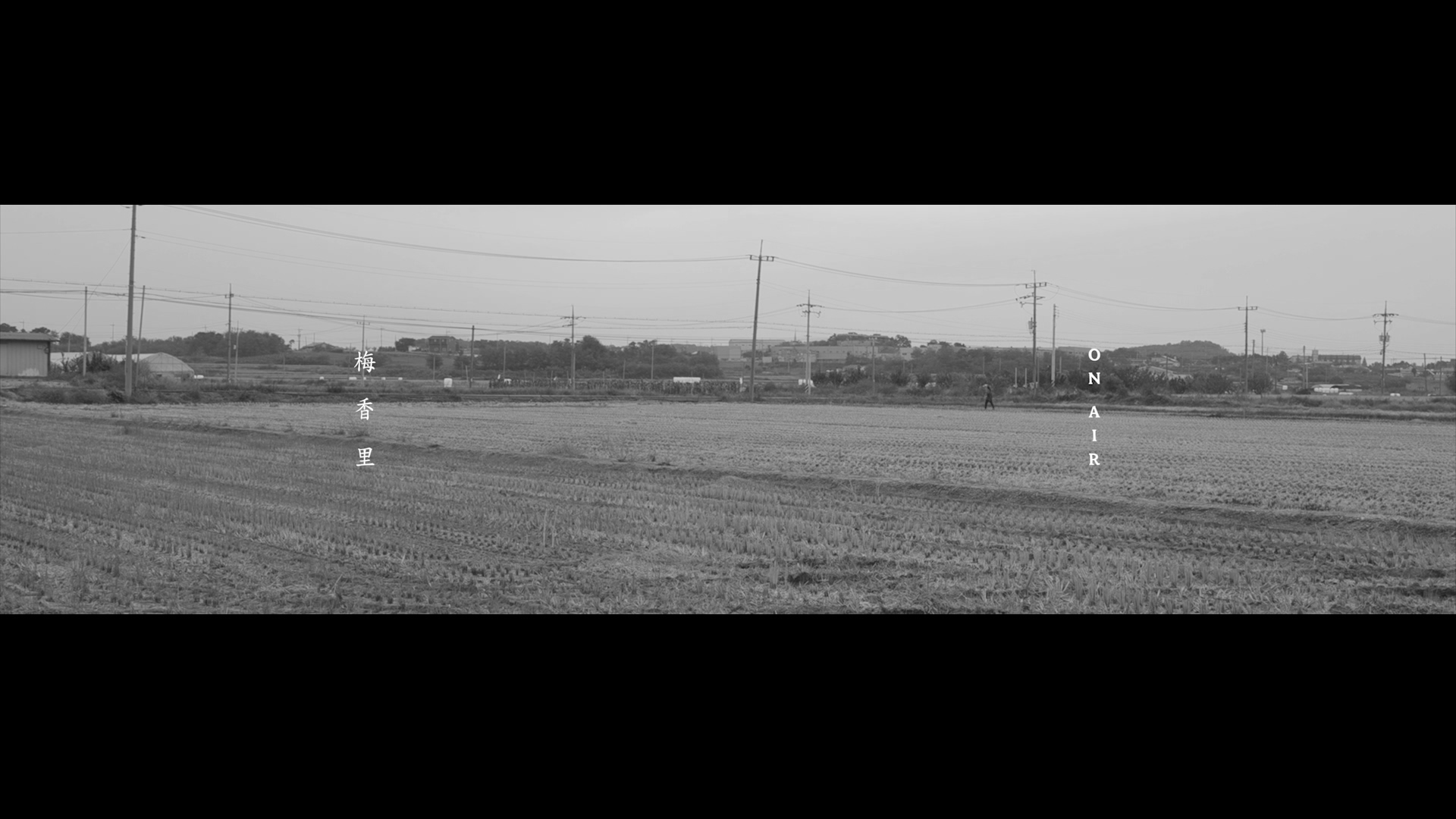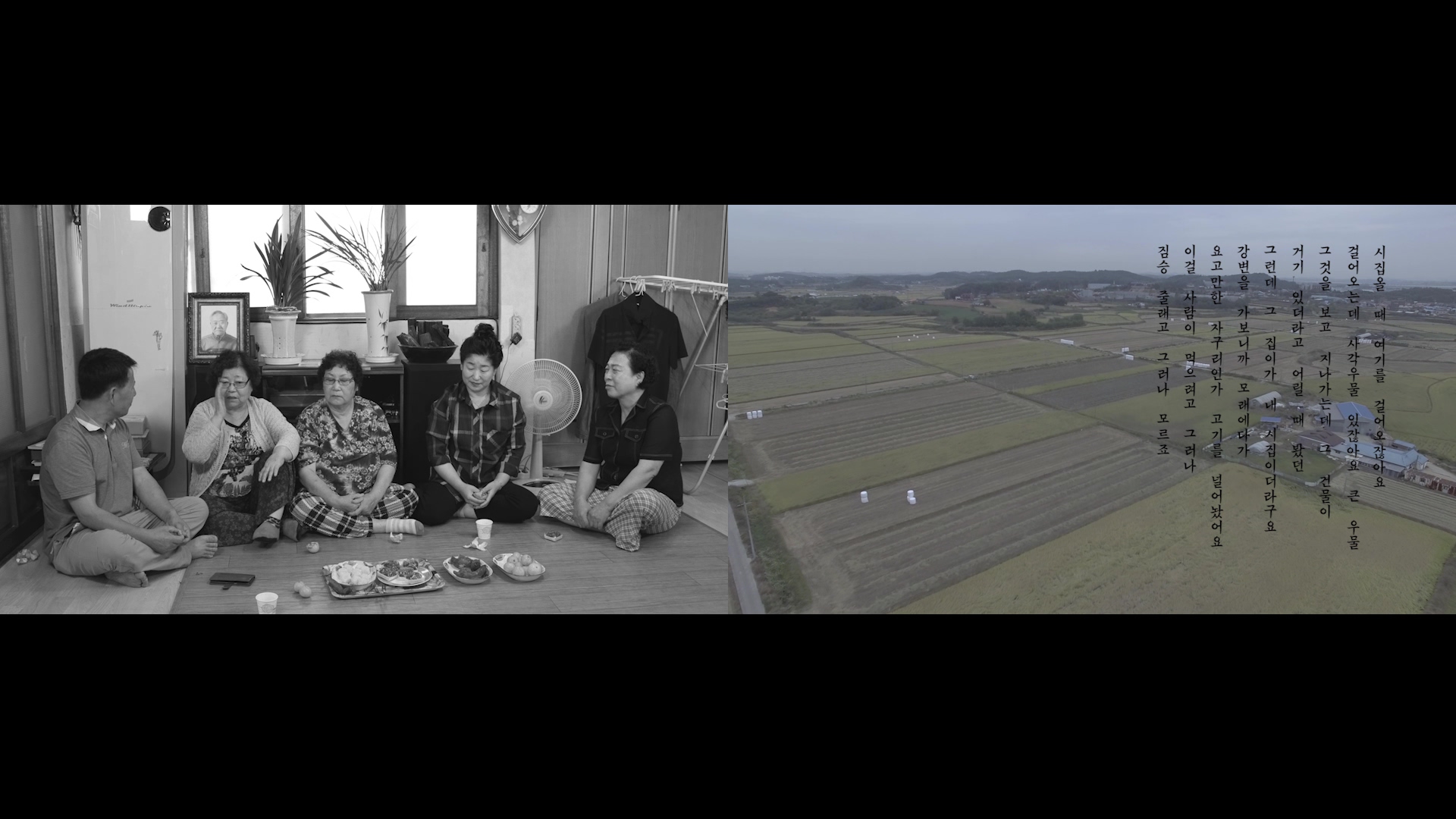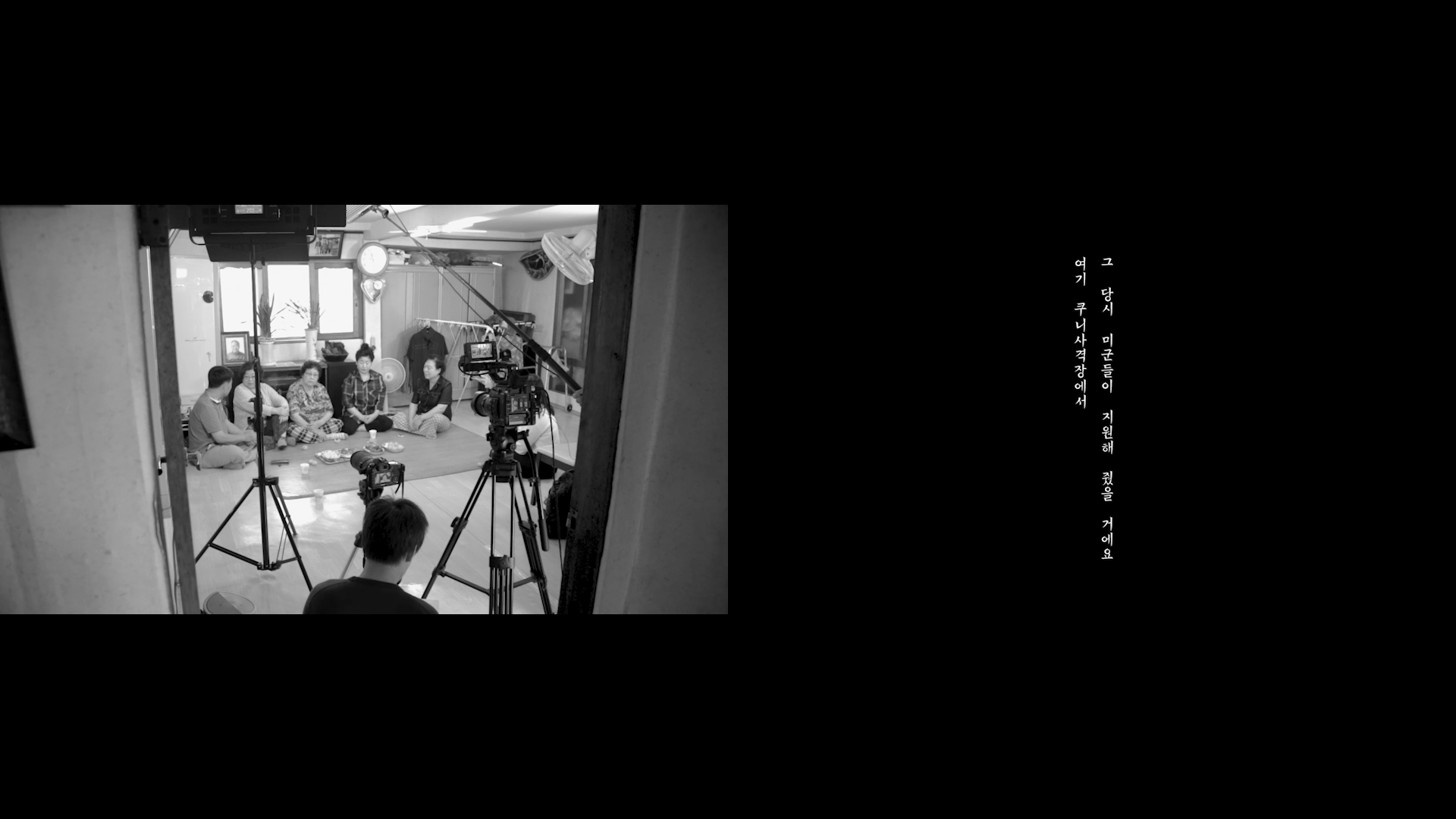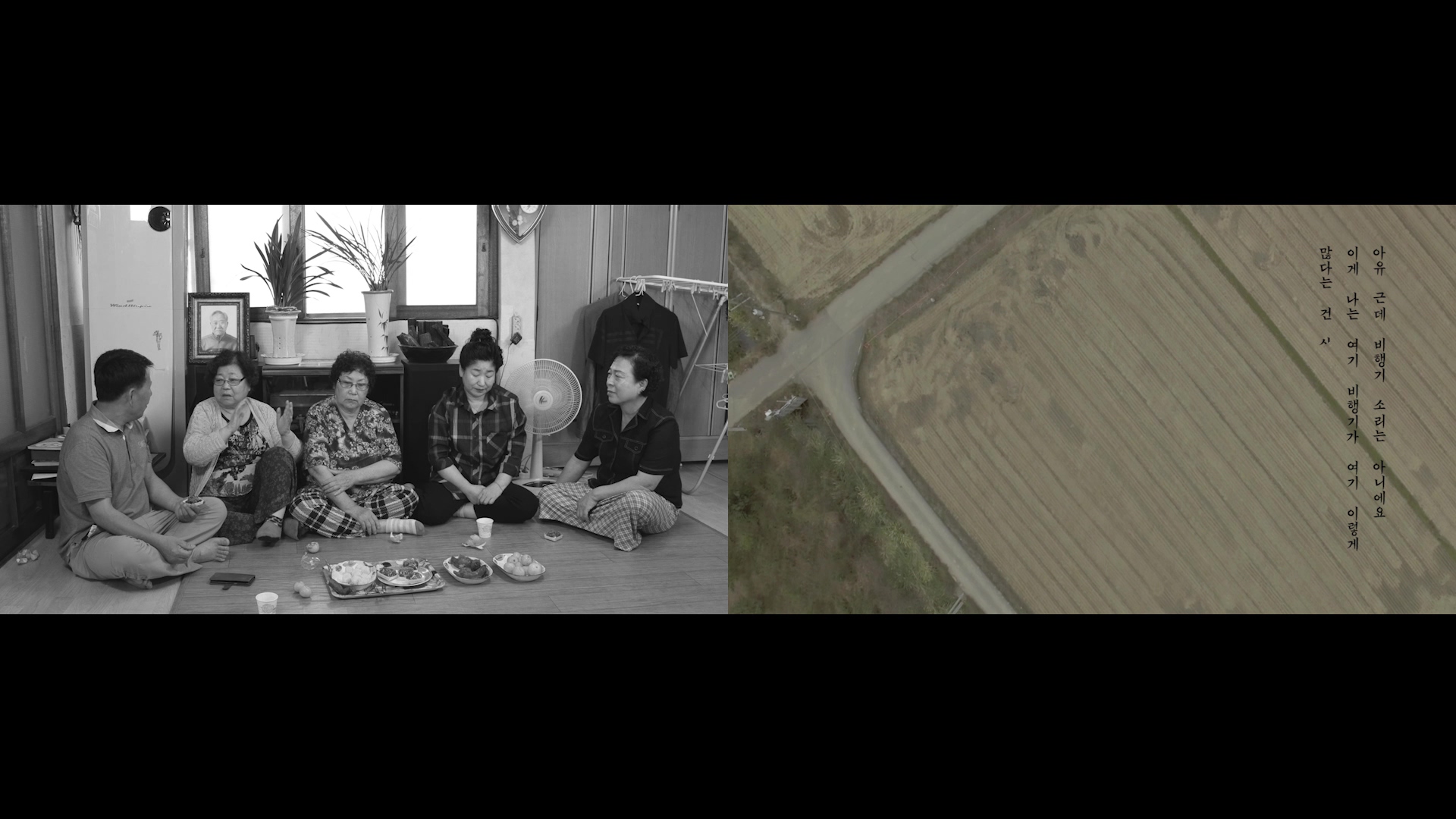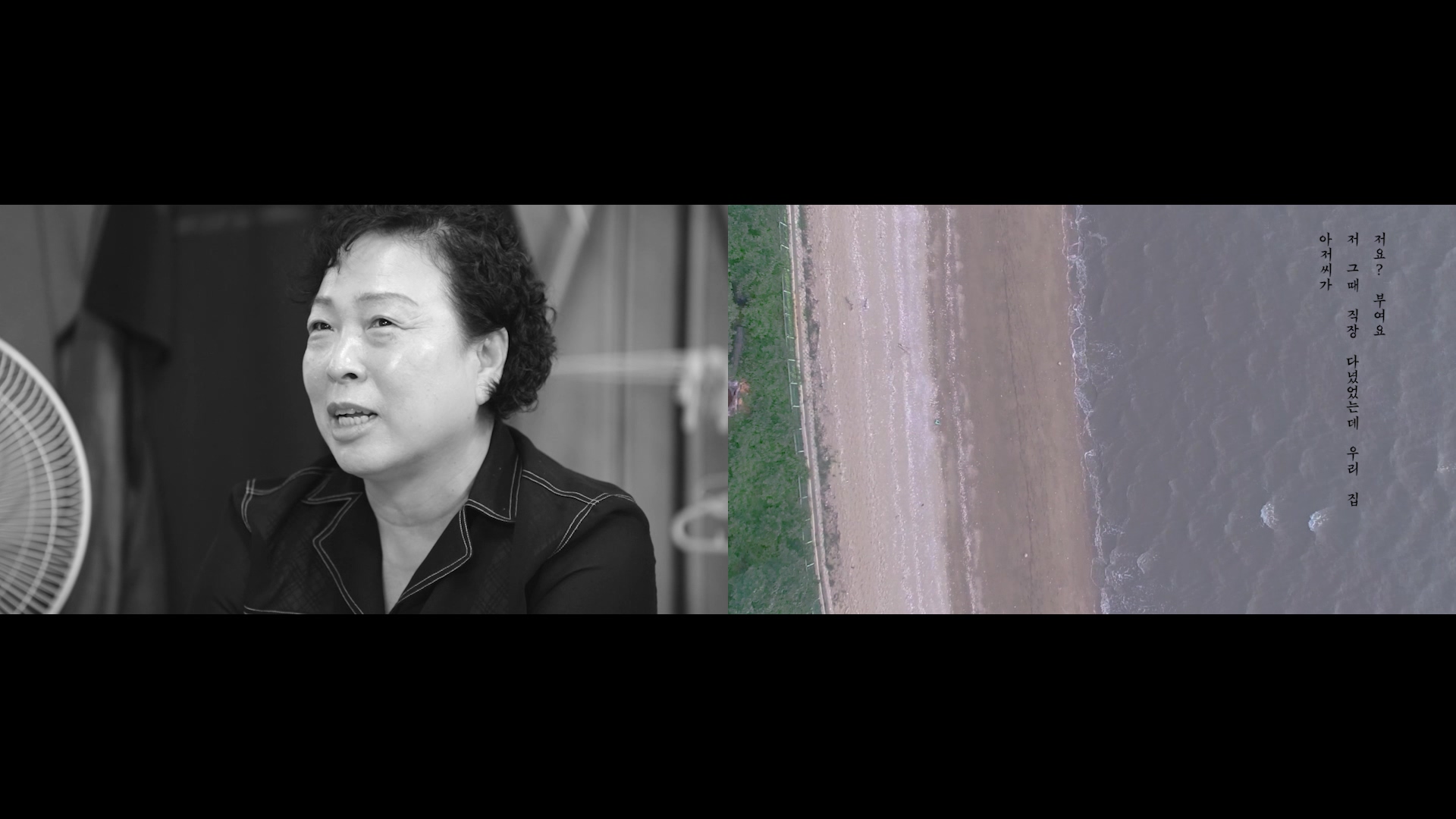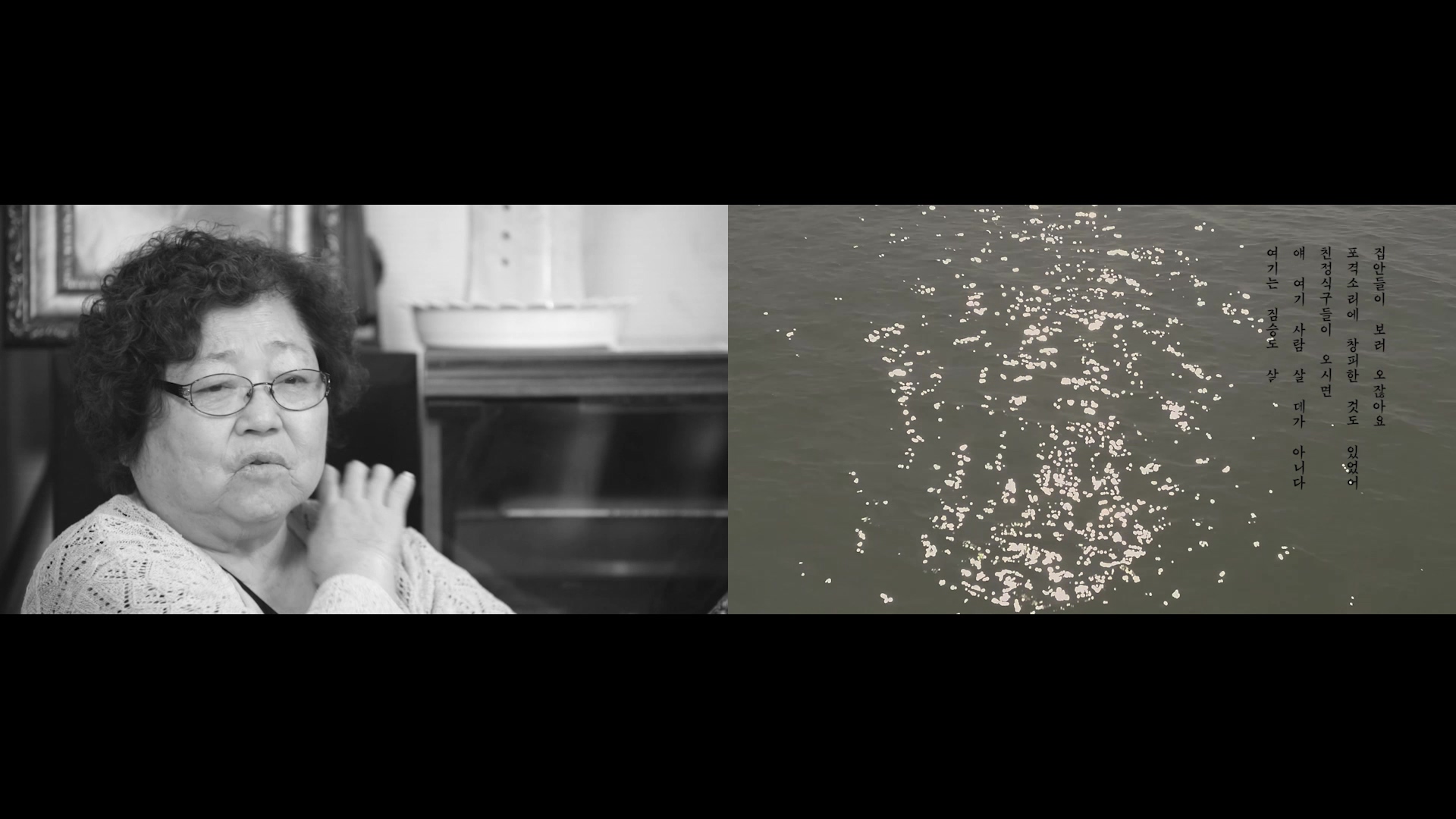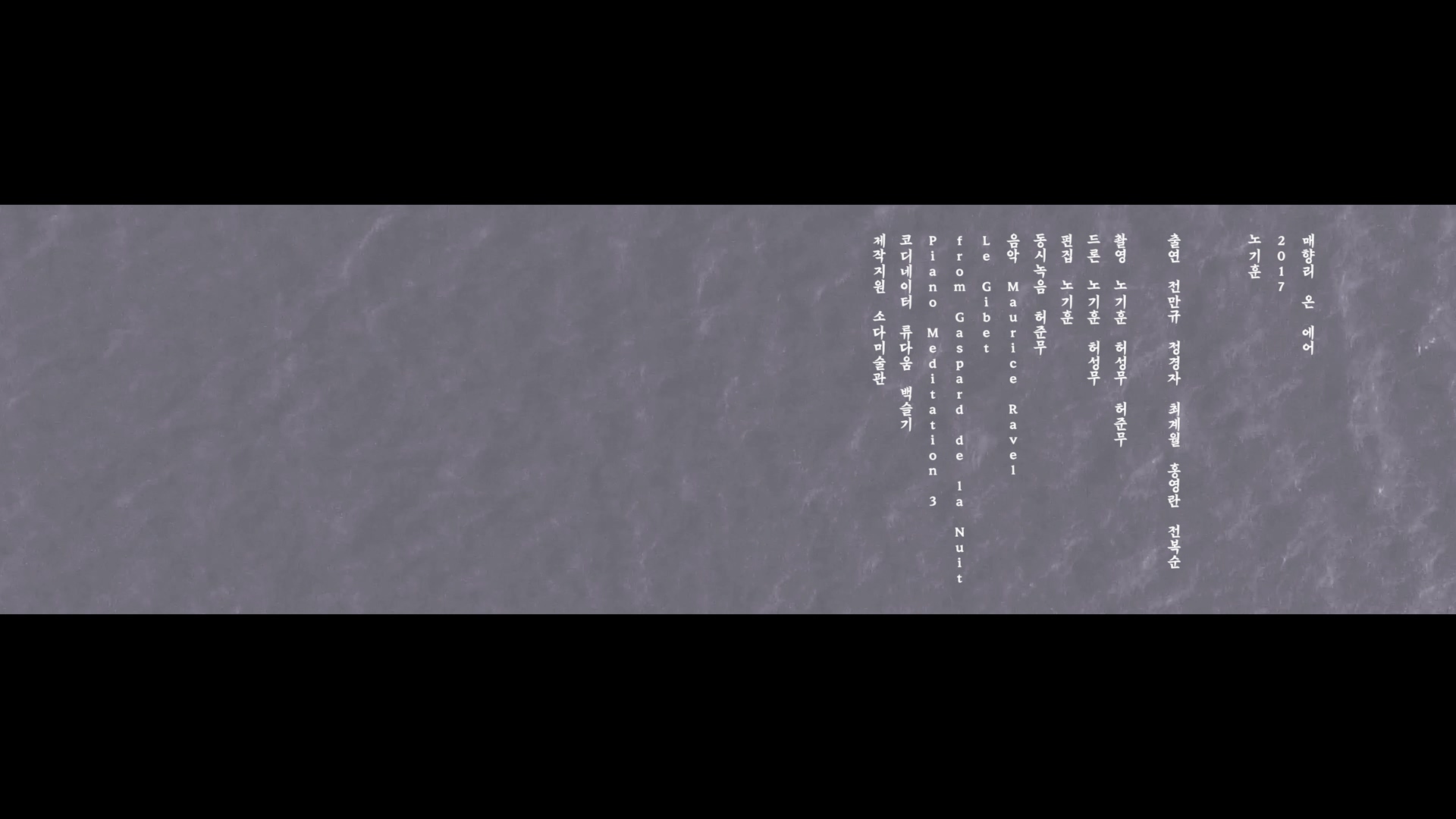Yellow Days (2009-Ongoing)
View Point Blue (2019-2023)
series Moon and Light (2017-2019)
Kooni on Air <Chapter 1. Picnic> (2017)
Line 1 (2013-2016)
No Surprises (2016)
Ki Hyongdo (2015)
Sync Reset (2015)
Black Night (2014-2015)
Mise en Scène (2009-2013)
Concrete Romance (2013)
White Ghost Island Project (2013-2014)
Report of Subjectivity. Red Nation (2012)
series Aesthetic Surgery (2011-2017)
Kooni on Air
Commission Work, 2 Channel Video Installation
The U.S. Air Force sighting shot in
Maehyang-ri, Hwaseong, Gyeonggi Province, began in 1951 at the Korean War. Under the Korea-U.S. Administrative
Agreement signed in 1952, Gooni in Hwaseong, where the shooting range is
located, was named Kuni Shooting Range in American pronunciation.
On August 30, 2005, the Seoul District
Court ruled that 13 residents, led by the Umekari Youth Association, won the
plaintiff's suit against the government for damages caused by the bombing
noise. It was used as an air force bombing
training ground for the U.S. Forces. every 15 to 30 times, an average of 11.5
hours a day before being transferred to the South Korean Defense Ministry.
Chairman Jeon Man-gyu is the only person
who communicates with the media about Maehyang-ri's suffering. Since his youth, he has been active in
local youth association and led the Countermeasure Committee. He was born in 1956 and has devoted his
life to trying to escape the noise of bombing on behalf of some 4,000 residents
of 713 Maehyang-ri households affected by the shooting range since 1951. He is representative of the entire campaign
to abolish the shooting range, such as interviews related to Maehyang-ri, a
sit-in protest against the occupation of the shooting range, the National
Assembly struggle, and administrative litigation so the media actively use the
voice of Chairman Jeon Man-gyu, who has a manly tone with an image of activist.
<Koonion Air> is not a statement by
Chairman Jung Mang-gyu, who was the only statement by Maehyang-ri but from
middle aged woman who was never shown by media. These words are recorded as if they were
bewildered without being dropped out of the filming scene, which is in the form
of an interview without a script. Interviews in ways that are not edited and
censored by any intention, begin with the stories of Maehyang-ri women under
the theme of general life in Maehyang-ri. Their words are voices that have been
neglected until now,
It is an essential aspect of religion, daily life,
people, and economy that always appears around us.
경기도 화성시 매향리에 미공군 사격연습이 시작된 것은 625 전쟁이 한창이던 1951년이었다. 1952년 체결된 한미행정협정에 따라 사격장이 있는 화성시 고온리(Gooni)는 미국식 발음으로 쿠니사격장(Kooni)으로 명명되었다.
2005년 8월 30일, 매향리 청년회를 중심으로 한 주민 13명이 폭격 소음으로 피해를 입었다며 국가를 상대로 낸 손해배상 청구소송에서 서울지방법원이 원고 승소 판결을 내렸다. 한국 국방부로 이관되기 전까지 연간 약 250일에 걸쳐 일일 평균 11.5시간 동안 밤낮없이 15~30회 간격으로 주한미군의 공군 폭격훈련장으로 이용되었다.
매향리의 고통을 다루는 미디어에 등장하는 인물은 젊은 시절 지역청년회에서 활동하며 대책위원회를 이끌던 전만규 위원장이 유일하다. 그는 1956년 생으로, 1951년 이후 사격장으로 인해 피해를 입은 매향리 713가구 4천여명의 주민을 대표하여 자신의 일생을 폭격 소음에서 벗어나려는 일에 헌신해 왔다. 그래서 매향리와 관련한 인터뷰, 사격장 점거 농성 및 국회투쟁, 행정소송 등 사격장 폐지 운동의 전반에서 대표성을 띄며 거의 홀로 국가에 맞서왔기 때문에 미디어는 ‘운동권 이미지를 가진 남성적 어조’인 전만규 위원장의 목소리를 적극적으로 활용한다.
<Kooni on Air>는 지금까지 매향리의 일들이 외부로 노출된 유일한 진술이었던 전만규 위원장의 어조 바깥에서 숨어있던 아주머니들의 말을 모은 것이다. 이 말들은 대본이 없는 인터뷰 형식 날 것 그대로의 촬영 현장에서 탈락하지 않고 넋두리인 듯 녹화-녹음된다. 미디어의 편집을 거치지 않고 어떠한 의도로든 검열되지 않은 방식으로써의 인터뷰는 매향리 생활 일반을 주제로 매향리 여성들의 이야기들로 발화된다. 그들의 말은 이제껏 매향리에서 들리지 않던 목소리이며, 언제나 우리 주변에서 들리는 종교-일상-인물-경제가 모두 뒤섞인 구체성을 띤 삶의 형태이다.
